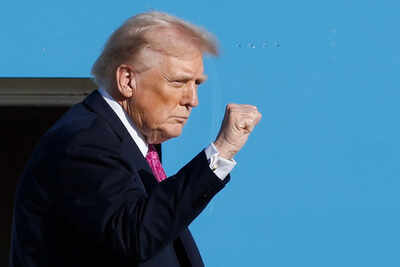Trump eases H-1B visa fee, but student caps cloud the future of Indian talent: Here’s why

The Trump administration’s recent decision to ease the controversial $100,000 H-1B visa fee has offered relief to thousands of Indian professionals and students already in the United States. Yet, a new cap on foreign student admissions has raised concerns about the long-term flow of talent from India, the Global Trade Research Initiative (GTRI) warns.
Visa relief for existing talent
On 21 October, 2025, the US Citizenship and Immigration Services clarified that existing visa holders and students currently in the United States will not be required to pay the $100,000 fee, initially announced on 19 September, 2025. The exemption specifically covers students transitioning from F-1 to H-1B status and professionals moving from intra-company L-1 visas to H-1B, ensuring continuity for a substantial section of the Indian diaspora.“This ensures continuity for thousands of Indian students and skilled professionals in the US, who can now transition to work visas without incurring exorbitant costs or leaving the country,” the GTRI report stated. Indians account for nearly 70% of all H-1B visa holders and 27% of international students in US universities, making the exemption particularly consequential.The revised rule also shields existing H-1B workers from retroactive fees and empowers the Department of Homeland Security to waive costs in cases deemed to be in the national interest.
A new barrier for future students
However, this relief comes alongside a stringent cap on foreign student admissions. Only 15% of total university intake can now be allocated to international students, with a maximum of 5% from any single country.“Trump’s parallel cap on foreign students, only 15 per cent of total students can be from abroad, and no more than five per cent from one country makes it harder for Indians to study in the US and later get work visas,” the GTRI report notes. For India, which sends the largest cohort of students to American universities, this sharply narrows the entry funnel for emerging talent.“The two measures pull in opposite directions — one facilitates visa transitions for those already in the US, while the other tightens entry for new students,” the report added.
Uncertainty and long-term impact
The think tank highlighted that frequent policy reversals under the Trump administration have created uncertainty for Indian IT firms and professionals planning long-term mobility. “The volatility in US immigration policy has become a greater concern than the fee itself,” the report noted.While the October 21 clarifications stabilise the situation for approximately 300,000 Indian professionals currently in the United States, the combination of capped student admissions and unpredictable policy shifts could compel India’s aspiring workforce to reconsider American education and career pathways.As policy oscillates between facilitation and restriction, the US faces the challenge of balancing short-term relief with the sustained inflow of global talent. For India’s students and professionals, the message is clear: navigating the American visa landscape now requires both agility and foresight.(with ANI inputs)






